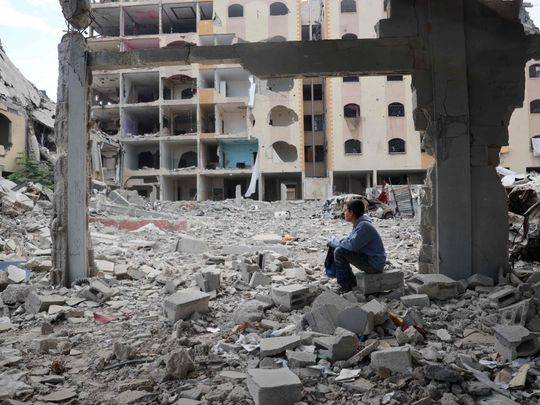
Dubai: The Israeli military has significantly expanded its presence in central Gaza in recent months, fortifying military bases and demolishing Palestinian buildings, according to Israeli officials and satellite images.
This move suggests Israel may be preparing for long-term control of the region, a New York Times report has said.
Reacting to the reported acceleration of construction by the Israeli military, the United States voiced opposition to any Israeli permanent base-building in the Gaza Strip.
The State Department said it could not confirm the report in the newspaper.
The State Department noted that Secretary of State Antony Blinken at the start of the war voiced opposition to a permanent Israeli presence in Gaza.
Asked about the accounts, State Department spokesman Vedant Patel said: “If they are true, certainly they would be inconsistent with a number of the principles that Secretary Blinken laid out.”
“There cannot be any reduction in the territory of Gaza. Beyond that, there can also be no forced displacement of Palestinians from their homes,” he told reporters.
Netzarim corridor
Since the early stages of the Gaza war, Israeli forces have occupied a strategic about 7km road known as the Netzarim corridor, which runs through the centre of the enclave.
This route has allowed Israel to prevent hundreds of thousands of displaced Gazans from returning to northern Gaza.
Over time, Israel has extended its control to a 46sqkm area, according to the Israeli military and a New York Times analysis of satellite images and video footage. In the last three months, the Israeli military has demolished over 600 buildings around the corridor, likely to create a buffer zone.
The military has also rapidly expanded a network of outposts, equipped with communications towers and defensive fortifications, further solidifying their presence.
Notable shift
The build-up in central Gaza marks a notable shift for Israel, which has traditionally avoided holding territory in Gaza. This strategy allowed Hamas to regain control in certain areas. The Israeli military, however, maintains that the expansion is for operational purposes.
This growing Israeli presence, according to the report, has sparked speculation about the future of Gaza. Israeli leaders have pledged to maintain security control in Gaza post-conflict, though the specifics of their plans remain unclear. Analysts suggest that the increase in infrastructure along the Netzarim corridor could play a significant role in these future plans.
Control over the corridor, which runs from the Israeli border to the Mediterranean Sea, gives Israel the ability to regulate movement across Gaza, ensuring that displaced Palestinians remain in the south.
Recent Israeli military actions have further solidified control over both sides of the corridor, which spans approximately about 7km wide and 7km long. Israel initially captured Gaza during the 1967 Arab-Israeli war and maintained military bases and Jewish settlements there.
The country withdrew its troops and settlers in 2005. Some Israeli ministers have suggested that military control in Gaza could eventually lead to the return of Jewish settlements, although Prime Minister Benjamin Netanyahu has ruled this out for the time being. The former Israeli settlement of Netzarim, for which the military corridor is named, lies within the area now fully under Israeli control.












